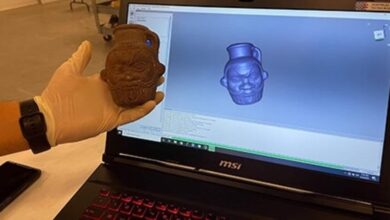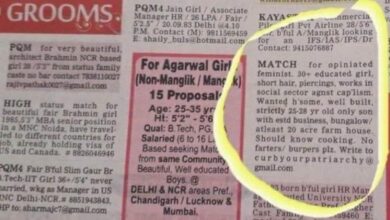In Tamil Nadu, a special wing of police aims to fight caste violence

For 30 years in Thottipalayam, a remote village in Tiruppur drict, Dalit children walked a kilometre to reach their school which was only 100 metres away because their route was blocked what is locally called an “untouchability wall”. When a local Tamil publication, Vikatan carried an article about this in October, officials of the Social Justice and Human Rights (SJ&HR) wing of the Tamil Nadu police demolished the wall. It came to light that the wall was built the dominant community belonging to the most backward classes along Dalit settlements, forcing the residents to take longer routes and restricting entry into common public spaces. PREMIUM The recent caste-based crimes have led the Tamil Nadu police to re-assess some of the functions and strengthen their exing systems. (ANI File) The wing was formed in 1972 to act on atrocities against the Schedule Caste and Scheduled Tribe population in the state. Today, it has units in each of Tamil Nadu’s 38 dricts and also raises awareness of caste-based discrimination. In Tamil Nadu, caste shapes everyday life and even dictates electoral outcomes. Even today, there are streets and wells Dalits are barred from using; neighbourhoods are demarcated caste flags that adorn road infrastructure such as electric poles. In rural areas, a Dalit neighbourhood is referred to as a “colony” and has separate temples, shops and saloons. What’s more, crimes against oppressed people have continued during the current DMK government’s rule as the party espouses a social justice model of governance. In the past 30 days alone, the state has witnessed a slew of caste-based atrocities. On November 11, six young men belonging to the most backward classes were detained under the Tamil Nadu Goondas Act (1982) for stripping two young Dalit men and urinating on them in Thoothukudi on October 30. On November 3, a 16-year-old boy died suicide in Pudukkottai. His parents allege that he was assaulted other backward class students for speaking to a girl from their community. On October 29, 10 Dalits were injured in Krishnagiri in an attack allegedly perpetrated persons from an OBC caste, who were led a functionary of the All India Dravida Munnetra Kazhagam (AIADMK). A senior officer of the SJ&HR wing who did not wish to be named said that they had come up with a plan aimed at students. The wing has identified seven dricts in southern Tamil Nadu which require such interventions, and the programmes are expected to begin this week: Tirunelveli, Thoothukudi, Thanjavur, Virudhunagar, Theni, Pudukkottai and Trichy. “The programme will educate them against caste differences, make them understand the consequences of indulging in such violence,” the official said. “We also plan to start a club which will include children from all communities where they will do activities like hiking together. So they won’t be competing against each other but they will have to reach a common goal. We will plan more such programmes to establish harmony between them.” Last April, in Tirunelveli drict, a fight inside a government school turned violent, around coloured threads that students wear which are conspicuous caste markers. A boy named Suriya, who belonged to the Thevar caste (an OBC but dominant community) died after a verbal altercation with a 17-year-old Dalit boy escalated. The Dalit boy and two of his Muslim friends became accused in the case, and Dalits in the Ambasamudram village — where the teenager lived — were given police security cover after the Thevar community vowed revenge. Tirunelveli-based activ and founder of Human Rights Council M Bharathan says that while there are several wings such as the SJ&HR, a human rights commission, and an SC/ST commission, there is no coherent action between them. “I remember in 1996, there was a caste-based killing in Gangaikondan at that time. The ADGP of the SJ&HR wing and the drict collector went to the homes of each of them involved, just spoke and then got everyone together for a dialogue until the matter was resolved. After that, Gangaikondan has not seen a crime like that,” Bharathan said. The police are often accused of protecting communities they hail from, Bharathan said and advocated for a similar dialogue between the communities as well as for the police to engage more with civil society and NGOs. “I feel these commissions have been more of a monitoring forum of caste-violence-prone villages rather than implementing plans in these places to prevent caste atrocities. They need to be on the field more.” Tirunelveli and Thoothukudi dricts have been a tinder box of caste fights that have resulted in murders and revenge killings. It is only in recent years that these conflagrations have penetrated into classrooms. Concerned over a series of such recent atrocities against Dalits in Tamil Nadu, the Dalit Intellectual Collective based in Chennai has demanded that chief miner M K Stalin call for an all-party meeting to consult ways to end this. “The lukewarm response of the DMK government is alarming,” C Lakshmanan, convener of the collective said in a statement. The recent caste-based crimes have led the Tamil Nadu police to re-assess some of the functions and strengthen their exing systems. The official quoted above said that they have brought in a three-tier system in August to improve the quality and speed of investigation until the case is completed. First, the head of the wing reviews the progress of cases in all the dricts of Tamil Nadu every month. Secondly, awareness meetings have been increased in “atrocity-prone” areas to enlighten people about their rights and the facilities available, and lastly, the unit asss victims to ensure that they get the ‘Monetary Relief Fund’ under relevant laws. “In several cases, the victims of caste atrocities do not get compensation because they do not have a community certificate or bank accounts or some identity documents,” the official quoted above said. “ deputing officials for victim assance we have reduced the community certificate pendency from 340 last year to 172 this year. Last year, ₹25 crore was released under the Monetary Relief Fund. So far this year, we have already released ₹46 crore.” The unit has conducted close to 2,000 awareness meetings this year up to September of which the highest has been in the caste-sensitive regions of Tamil Nadu. Last year, the Union government released data that Tamil Nadu’s SJ&HR wing identified 345 villages in 37 dricts as ‘Atrocity prone’ in 2020. Identifying atrocity-prone villages in every state is part of the national system under the Union minry of social justice and empowerment. Section 21 (2) of the Scheduled Castes and the Scheduled Tribes (Prevention of Atrocities) Act, 1989 specifies identifying “Atrocity Prone Areas” where crimes have happened against members of SC/ST and they are vulnerable to being subjected to atrocities. “If there has been no crime for two years, the identified village is then removed from the atrocity-prone l,” the official quoted above said. “We are having a re-look at this assessment. We are also revamping units that have been working for some time preventing caste-atrocities,” Tamil Nadu’s Director General of Police Shankar Jiwal said. The unit holds regular meetings with non-governmental organisations to provide socio-economic rehabilitation measures, the DGP said.







